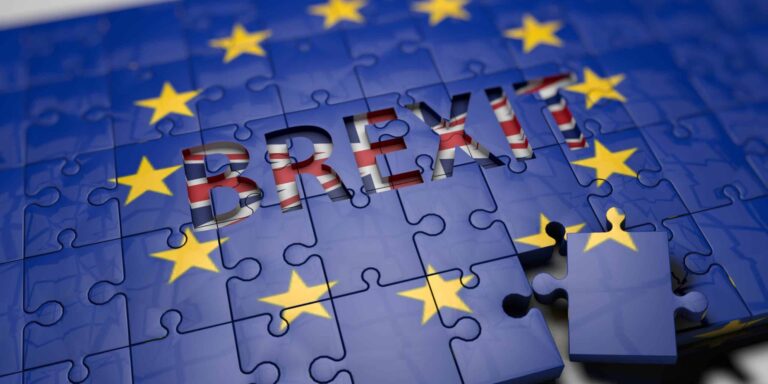Merchandise Processing Fee: Hidden Information You Need to Know
Whether you’re a foreign company importing your products to the United States, or you’re an American company importing foreign goods as part of your business, you’ll need to account for the merchandise processing fee (MPF). While the terms of payment are relatively straightforward, there are many considerations that determine how much an importer ultimately pays. To help you navigate this issue, we’ve read the fine print and compiled a list of what you need to know about the MPF.
What is MPF?
The merchandise processing fee is the U.S. Customs and Border Protection charge associated with most imports entering the United States, whether formal or informal entry. It’s a user fee collected designed to help process merchandise entering the U.S. and to monitor customs and trade compliance.
It uses an ad valorem fee structure of 0.3464% of the goods being imported, ranging from a minimum of $25 to a maximum of $485 per entry (ad valorem simply describes the proportion of the estimated monetary value of the goods concerned).
That is to say, even if 0.3464% of the value of goods being imported is less than $25, a minimum payment of $25 must still be made. Similarly, if 0.3464% of the goods’ value is over $485, the merchandise processing fee cap will never surpass $485. MPFs are appraised for both duty-free and dutiable goods.

Have other concerns about logistics? Download this guide to learn more about supply chain structure organization! >>
The Facts
- Certain free trade agreements make select countries exempt from the MPF. See here for a list of which countries qualify. Only goods that are explicitly authorized by legislation in a trade agreement are considered merchandising processing fee exemptions, which means that goods qualifying for a preferential agreement are not automatically exempt. Note: NAFTA exemptions apply to goods originating in Canada or Mexico, but only if they are eligible to be marked as products of Canada or Mexico.
- Interest can accrue for MPF underpayments.
- Non-payment of the MPF may subject you to sanction by U.S. Customs & Border Protection.
- The MPF is payable at the time of presentation of the entry summary. The late payment date is the date 30 calendar days after the interest computation date.
- In the case of any formal manual entry or release of goods, a surcharge of $3 will be added to the ad valorem fee.
- For goods informally entered or released, or for goods valued under $2,500 the MPF is charged as follows:
- $2 if the entry or release is automated and not prepared by U.S. CBP personnel
- $6 if the entry or release is manual and not prepared by U.S. CBP personnel
- $9 if the entry or release, whether automated or manual, is prepared by U.S. CBP personnel
- In the case of American agricultural products that are processed and packed in a foreign trade zone, the MPF will be applied only to the value of any material used to make the container for the products, but only if that merchandise is subject to entry and the container is of a kind normally used for packing such merchandise.
- For purposes of determining the jurisdiction of any court or agency of the United States, the MPF and any other fees described in this list will be treated as a customs duty.
- Payments can be made using the following formats:
- Any legally current U.S. currency, any bank draft, cashier’s check, or certified check drawn on a national or state bank or trust company of the U.S. or a Puerto Rican bank or any possession of the U.S. if such draft or checks are acceptable for deposit by a Federal Reserve bank, branch Federal Reserve bank, or other designated depositary. Checks on foreign banks, foreign travelers’ checks, and commercial drafts or bills of exchange subject to acceptance by the drawees are NOT accepted.
- Any uncertified checks that don’t meet the above criteria will be accepted only if there is a bond to secure the payment of the duties, taxes, fees, interest, or other charges on file with U.S. CBP, or if a bond has not been filed, the organization or individual drawing and tendering the uncertified check has been approved by an authorized CBP official to make payment in such manner.
- A U.S. Government check endorsed by the payee to the U.S. Customs Service, a domestic traveler’s check, or a U.S. postal, bank, express, or telegraph money order. A valid U.S. driver’s license, U.S. passport, a current credit card issued by one of the numerous travel agencies or clubs, or other credit data is required for signature validation if using this form of payment.
- Payment by credit card is limited to non-commercial entries at designated Customs-services locations and must be authorized by the Commissioner of Customs.
- Personal checks are accepted only when drawn for the amount of the MPF to be paid by such check.
- The face amount of a bank draft, cashier’s check, certified check, or uncertified check cannot exceed the amount due by more than $1. The face amount of a U.S. Government check, traveler’s check, or money order cannot exceed the amount due by more than $50. Checks should be made payable to the United States Customs Service. A charge of $30 will be added for each check which is returned unpaid by a financial institution for any reason. The charge will not be assessed if it is shown that the maker of the check was not at fault in connection with the return of the check.
- Any payment not made in person must be accompanied by the original bill or by a communication containing sufficient information to identify the account or accounts to which it is to be applied.








